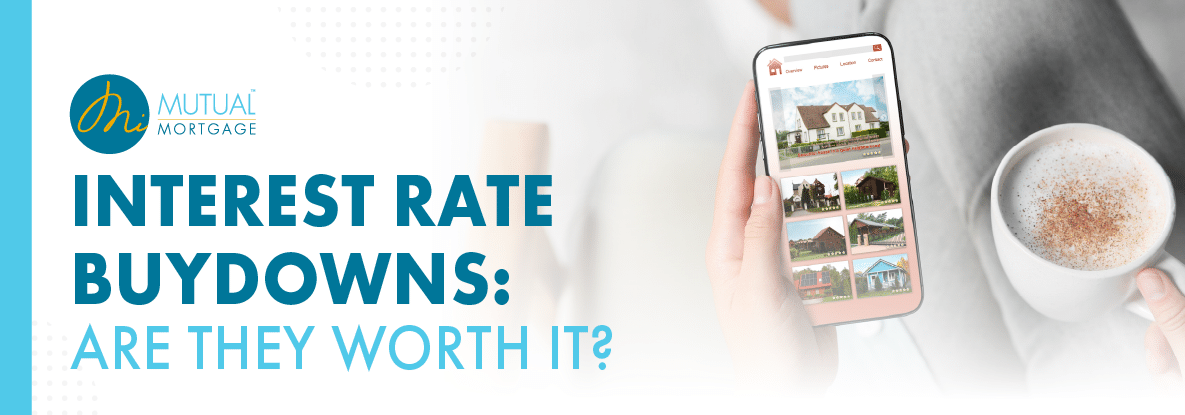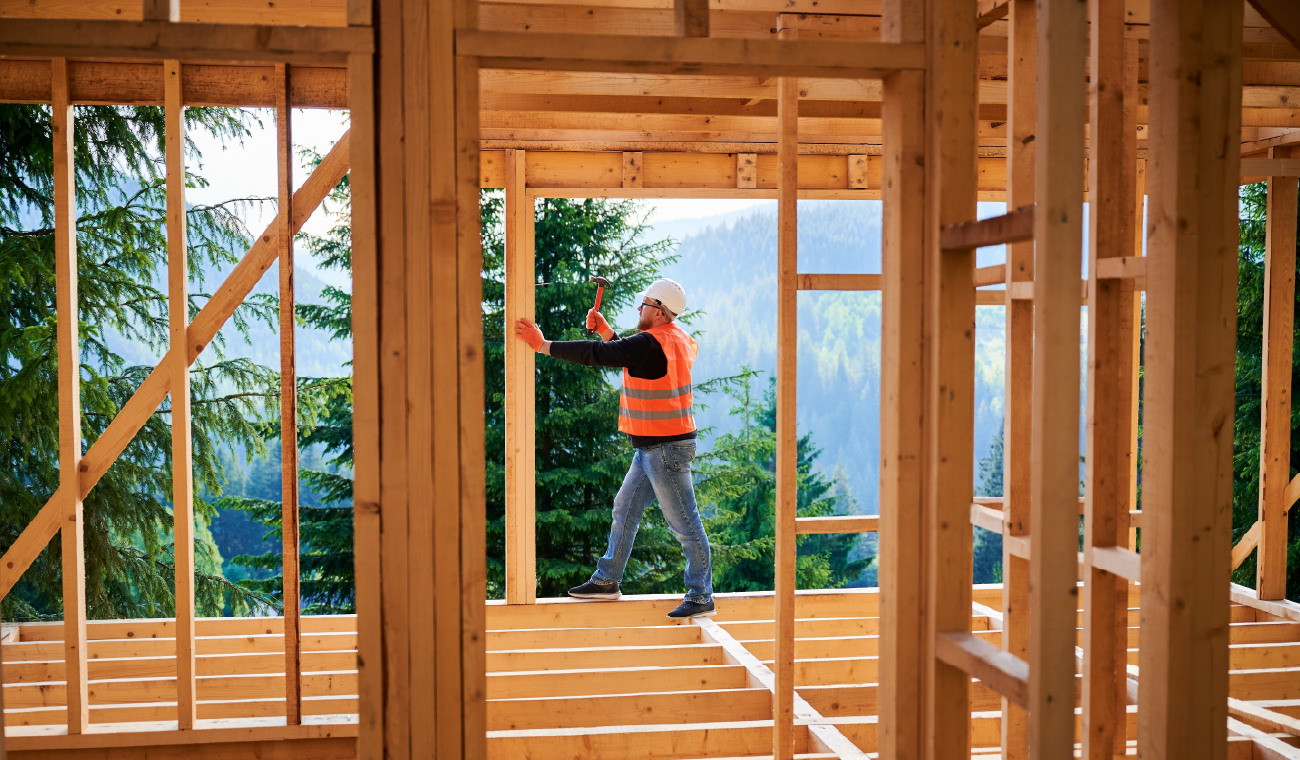Interest Rate Buydowns: Are They Worth It?
April Gould, May 23, 2025

In today’s shifting economic landscape, many potential homebuyers are exploring creative ways to make homeownership affordable. One financing option gaining attention is the temporary buydown. But what exactly is it, and when does it make financial sense?
In today’s shifting economic landscape, many potential homebuyers are exploring creative ways to make homeownership affordable. One financing option gaining attention is the temporary buydown. But what exactly is it, and when does it make financial sense?
What Is a Temporary Buydown?
A temporary buydown is a financing strategy that reduces a borrower’s interest rate for a specific period during the early years of mortgage repayment. The cost of this reduced rate is paid upfront, either by the buyer, seller, builder, or lender and is used to temporarily lower monthly mortgage payments.
During the buydown period, the interest rate gradually steps up each year until it reaches the full note rate. This approach can ease the transition into homeownership or offer relief during early financial adjustments.
Buydowns vs. Discount Points: What’s the Difference?
Buydowns are often confused with discount points, sometimes referred to as paying points. While both buydowns and discount points are methods to reduce the mortgage rate, they differ in structure and purpose.
The main difference between a buydown and discount points is the duration of the interest rate reduction. A buydown temporarily reduces the interest rate, while paying points can reduce the interest rate for the entire term of the loan.
Discount Points:
What They Are: A permanent interest rate reduction purchased upfront.
Who Pays: Usually the borrower, though sometimes a seller or lender may contribute.
How They Work: One discount point typically costs 1% of the loan amount and may reduce the rate by about 0.25% (though this varies).
Purpose: Designed for long-term savings. Ideal for buyers planning to stay in the home for many years.
Buydowns
What They Are: A temporary interest rate reduction, typically structured over 1–3 years
Who Pays: Buyer, seller, lender, or builder.
How They Work: A lump sum is paid upfront and held in escrow to subsidize lower payments during the buydown period.
Purpose: Short-term. Helpful for affordability in the early years of the loan.
How Do Temporary Buydowns Work?
Buydown programs reduce the borrower’s interest rate for a set number of years. The most common temporary buydown structures are the 3/21, 2/1 and 1/0. All three options offer temporary relief with a structured payment increase until the full rate is in effect.
Here’s how they work:
3/2/1 Buydown
This version gives a 3% reduction in the first year, 2% in the second, and 1% in the third.
Example: On a 6.5% note rate, the interest rate would be:
Year 1: 3.5%
Year 2: 4.5%
Year 3: 5.5%
Year 4 and beyond: 6.5%
2/1 Buydown
Structured similarly to the 3/2/1, but for just two years. This would reduce the interest rate by 2% in year one and by 1% in year two. By year three, the rate reaches the full note rate and remains there for the life of the loan.
Example: If your note interest rate is 6.5%, your rate would be:
Year 1: 4.5%
Year 2: 5.5%
Year 3 and beyond: 6.5%
1/0 Buydown
This option lowers your interest rate for the first year only, and steps up to the full note rate for year two and beyond.
Who Pays for the Buydown?
Buydowns can be funded by various parties:
-
The Buyer (Borrower)
Buyers can opt to pay for the buydown at closing, treating it like prepaid interest. This may make sense if they expect higher income in the future or want lower payments up front.
-
The Seller
In a buyer’s market, sellers may offer buydowns as concessions to make their property more appealing. The seller covers the cost of the buydown (essentially prepaying part of the interest), which is held in an escrow account and applied toward the borrower’s reduced monthly payments. This can be a win-win: the seller gets the sale, and the buyer gets short-term payment relief.
-
The Builder
Builders often use buydowns to entice buyers to purchase a new construction home by offering short-term payment relief without reducing the home’s price.
-
The Lender
Some lenders, such as MiMutual Mortgage, offer lender-paid buydowns. This option can give the borrower a lower initial interest rate with the benefit of a long-term fixed-rate mortgage. The upfront fee can be rolled into the cost of the loan, therefore reducing the out-of-pocket expense for the borrower at closing
When Does a Temporary Buydown Make Sense?
A temporary buydown offers some key benefits. By reducing the mortgage payment during the buydown period, the homeowner can free up cash to be used on home improvements or other expenses. Additionally, the borrower can save on interest expense when the buydown is paid by a third- party, through builder incentives, seller concessions or lender-funded programs.
A temporary buydown can be a smart move when a borrower:
- Expects their income to increase in the next few years.
- Is purchasing in a high-rate environment and may refinance later.
- Is able to get the seller, builder or lender is to cover the cost.
- Wants a smoother financial transition into homeownership.
Step Up Into Homeownership With Temporary Buydowns
Temporary buydowns can provide valuable flexibility for buyers looking to step into homeownership in today’s market. By temporarily lowering monthly mortgage payments, buydowns offer short-term relief that can help borrowers transition more comfortably into their new financial responsibilities.
Working with an experienced Loan Officer ensures you receive personalized guidance to determine if a buydown, or another strategy, is the right fit for your unique situation and long-term goals.
Contact MiMutual Mortgage to see if a temporary buydown is right for you!
You are about to begin the mortgage loan application
- Applying on the MiMutual Mortgage Online Loan Application is quick, easy, and secure! The loan application will take about 25 minutes to complete.
- Once your application is submitted, you can log back into the MiMutual Mortgage Online Loan Application to securely upload requested documents, view your loan status, and communicate with your mortgage team.
- If you have questions, reach out to your MiMutual Mortgage Loan Officer.
Your guided mortgage journey starts here!
Start Application





